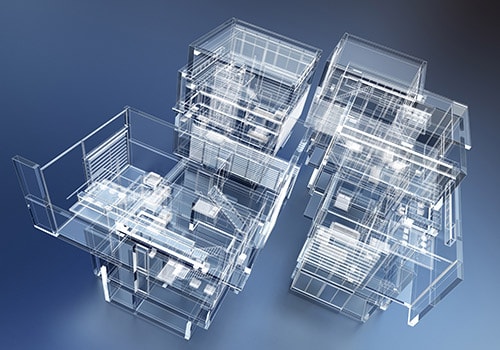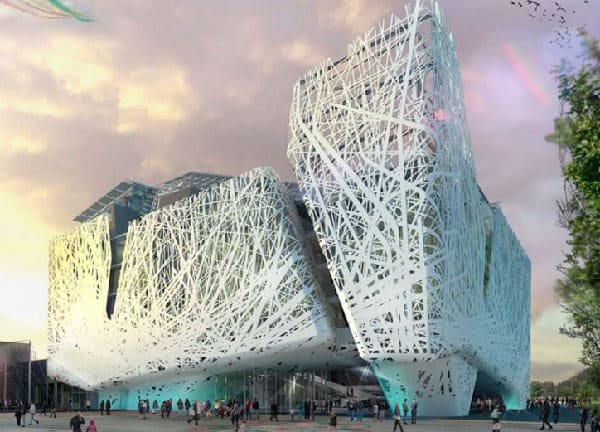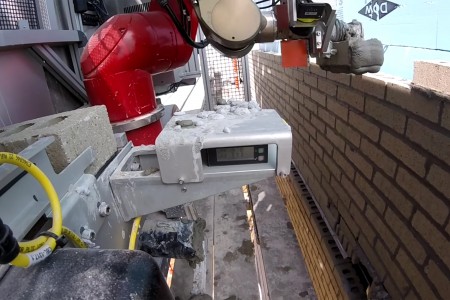Today, new technologies and materials are called to revolutionize people’s lives to unsuspected limits; Architecture and the world of construction in general are part of this technological revolution, and every day there is progress in the application of such technology in the construction of new buildings, bridges or any structure designed to make our lives easier.
Given the vital importance that the current situation charges for the implementation of new energy efficiency models, not only with the objective of reducing emissions and energy dependence, but also as a market driver and generator of business opportunities, especially in the rehabilitation field.
It is imperative that the worlds of architecture, engineering and technology work side by side in order to effectively implement the best available solutions.
Thanks to new technologies and materials will be achieved:
-improve construction processes.
– costs will be saved.
-More efficient use of resources.
-Energy saving and quality of life with the aim of building buildings with zero energy consumption.
Given this, we will present new inventions that are intended to mark a before and after in the field of architecture, paper and pen!
New Construction Technologies and Materials Trends
3d print
3D printing has already begun to take its first steps and it seems that its ascension will be unstoppable. This technology allows, apart from building models very faithful to the final construction, print entire walls, bricks, and even insulating materials.
Also, 3D printing can process materials such as mortars and concrete, widely used and demanded today.
The most prominent construction robot today is surely Hadrian, a construction robot created by the Australian Mark Pivac. Hadrian is able to lay 1000 bricks per hour, which is the equivalent of building a house in 2 days.
This machine, capable of calculating the amount of materials needed on its own, is giving a lot to talk about, and points out that it will be one of the most revolutionary inventions within the industry, although they still do not have the capacity to make all the cuts of a work (ceilings, insulation, doors or windows must be placed afterwards by the operators).
Internet of things
The real estate sector is increasingly related to the so-called “Internet of Things.” From private homes to offices, through shopping centers, more and more consumers want to appropriate smart homes, a concept closely related to the connectivity of everyday devices such as mobile phones.
Given the demand for autonomous homes, these functions are already being applied in construction, such as thermostats that turn off or on thanks to sensors that determine whether there are people inside the house or not, mobile phones that are used to turn on appliances, raise or lower blinds , start up electrical devices at a specific time or disconnect them if there is an overload in the network.
Therefore, our homes will be increasingly related to technology and will soon have smart devices that will decide many of the daily actions we perform in our home.
Airgel
This innovative material is composed of 90% to 98% air. It is solid, has a very low density and is very porous, making it a perfect thermal and acoustic insulator in windows and walls, resistant to high and low temperatures and capable of absorbing liquids up to 900 times its own weight.
The most incredible thing is that, despite its characteristics, it is a thousand times denser than glass, three times more than air and has a sparkling touch. In 2013, a new graphene-based variety was created in China, making it much less dense. Everything indicates that the airgel will be a daily material sooner rather than later.
Permeable concrete
Engineers have created a new type of permeable concrete that allows rainwater to pass through pavement and let nature do its job.
The permeable concrete is made with larger grains of rock and sand leaving between 15 and 35 percent open space.
On permeable concrete pavements, they are placed on top of a gravel layer or other porous base material that allows rainwater to settle to the ground.
This type of concrete is an excellent replacement for asphalt in parking lots not only significantly reduces runoff but also its lighter color getting the concrete to reflect sunlight and keep cool in the summer.
Concrete self healing
Concrete is the most widely used building material in the world being the second most consumed on land after water, being a cheap and very adaptable material but it is also susceptible to cracking and deterioration in its tensions either with heat and With cold extremes.
In the past the only way to solve cracks in concrete was to reinforce it, but a new type of smart concrete has been created that cures its own cracks.
A tiny sodium silicate capsule is integrated into the concrete mixture which causes the concrete to break when the concrete cracks and releases a gel as a curing agent that hardens to fill the vacuum.
It is not the only method of self-healing in concrete, other researchers have used bacteria or embedded glass capillaries or polymer microcapsules to achieve similar results. The future will tell us which is the most efficient system.
The prolongation of the life of the concrete could have enormous environmental improvements, being able to diminish its production. It currently accounts for approximately 5 percent of global carbon dioxide emissions and would not only make building structures safer, but also help cut greenhouse gases.
BIM
Like everything else in this life, construction needs to evolve and adapt to new technologies and thanks to BIM we can achieve it and thus be more competitive by being able to optimize times and resources.
Technology BIM (Building Information Moeling) is already a reality in the world of construction to generate building projects with high added value, thus optimizing costs and time devoted to the development of projects and subsequent to the execution of the same.
The BIM is a work methodology in the process of generating and managing building data during its life cycle (building geometry, spatial relationships, geographic information, component properties….), Using dynamic modeling software. buildings in 3D and in real time, to reduce the loss of time and resources in design and construction, also allowing information to be shared between all the agents involved and the effective collaboration between them.
It will be mandatory in building tenders in 2018 and in civil works in 2019 and its market is expected to reach 10,000 million worldwide in 2022.
Virtual reality
Finally, this innovative technique linked to sensory technology is a term that is applied to simulated environments through the most advanced computer technology that can transfer a certain physical presence anywhere in the real world, as well as in imaginary worlds.
Most current virtual reality environments involve extraordinary visual experiences, but in addition, some simulations include sensory information, such as sound transmitted through speakers or headphones.
In the field of construction we can reproduce an existing home that can be visited without the need for displacement or the recreation of virtual spaces of future buildings and thus have the exact idea of what we want to be built.
New technologies in Contart 2018
Finally, comment that the new technologies will play an important role in the next edition of Contart 2018 that will be held in Zaragoza from May 30 to June 1, 2018.
The event will revolve around four thematic areas:
-A1 Building 4.0 and innovation in construction.
-A2 Rehabilitation of buildings. Accessibility, energy rehabilitation, conservation and restoration
-A3 Sustainable building and almost zero energy consumption buildings
-A4 Building science and technology
With the aim of showing technical architects the near future of the building and thus analyzing the keys to differentiate themselves and position themselves in the new work niches that may arise thanks to new technologies in construction.
Do you know other new technologies or materials that might be interesting? Share your opinion with us! And if you liked the article, spread it through social networks. Thank you.




